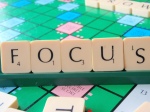 Can you remember a time when you really enjoyed teaching?
Can you remember a time when you really enjoyed teaching?
Before the mountains of marking and the pressures of report writing began to contribute to your feeling of overwhelm and stress? Take a moment to imagine that time and recall when you were totally satisfied with your teaching career.
Stress is a symptom of the flight or fight response and manifests in different ways for each individual and rather than let the stress control you, here at BrightLight we have identified some strategies that will enable you to develop a greater resilience to the stress you may encounter in your teaching environment.
1. Listen to your body
You may suffer from headaches, low back pain and insomnia amongst other things. This is your body’s message to you that it is time to take stock of your lifestyle. Go through the checkbox below to see where you can make some improvements.
| Tick the box if your answer is |
Yes |
| I get enough sleep |
|
| I drink at least 8 glasses of water a day |
|
| I eat a good breakfast |
|
| I never skip meals |
|
| I exercise at least 30 minutes a day |
|
| I have regular medical checkups |
|
| I have regular alcohol free days |
|
| I do not smoke |
|
| My weight is in the healthy range for my age and height |
|
| I have had a restful holiday in the last few months |
|
If you have ticked Yes to all the answers, then congratulations! – give yourself 10/10, a pat on the back and a gold star! You are well on the path to sustainable teaching practices. If you have ticked 5 or less answers, then perhaps a review is in order.
2. Switch your mind off
 This is easier said than done for most people. Once you start thinking about “switching off” then what do you think about? If I asked you not to think of a pink elephant, you would have to first think of one in order to not think of one…… wouldn’t you?
This is easier said than done for most people. Once you start thinking about “switching off” then what do you think about? If I asked you not to think of a pink elephant, you would have to first think of one in order to not think of one…… wouldn’t you?
Meditation is the ideal way to switch off. Giving the brain some time out with any form of meditation – it can be guided meditation or visualization, Zen practices, blue sky mind meditation, stillness meditation, Yoga mudra, even prayer is a form of meditation. The type of meditation, the location and the time you take is not important, what matters is that you do it. The paradox is that if you think you have no time “to do this stuff”, is that it creates space to do more and with more focus.
3. Work in real time
When you work in real time you are better able to prioritize. You can then allocate yourself quality time for correction, report writing and preparation.
- Schedule all your commitments in your planner or diary on a regular basis. This includes your personal commitments, including attending to your health and wellbeing and family time.
- Look at each day in isolation and focus on completing each task you have set yourself – every day.
- Write a “to do list” and tick each item off as you complete the task.
- Have a “Just for today “ mindset. Just for today, have no worries, do what you can with no recriminations.
- Learn to say “No” or set a limit to events or situations that will over commit your valuable time and resources.
4. Talk
 Choose a trusted person to talk to.
Choose a trusted person to talk to.
This could be friends or family, but there are occasions when you may want to run something past an independent listener. This could be a therapist, colleague or a mentor. You might even want to consider coaching. Whoever you choose, it is crucial that you have trust and rapport with them. If there is no-one at all you feel you can turn to, then use a journal to write down your thoughts.
If you have a specific problem, you might find it useful to respond to the following:
- Describe the situation that is worrying you.
- What specifically do you fear might happen?
- Rate the likelihood from 1 to 10 that it will happen. (10 being most likely)
- What evidence supports your worry?
- What evidence does not support your worry?
- If it did happen, what action could you take?
- What is the worst thing that could happen? (be as realistic as possible)
- What is the best thing that could happen?
- What is most likely to happen?
- Are there any useful actions you can take now?
- What would you tell a friend who was in your situation?
- Re- rate the likelihood that your fears will be realized (from 1 to 10)
5. Live with purpose
The first and most obvious question here is why did you become a teacher? Are you living your dream or did you choose it because it is a “safe” place to be? Nothing wrong with safe in most circumstances, but if you are not living a life congruent with your values, then eventually there will be conflict. Internal conflict can manifest in illness and this can range from minor niggles to serious and life threatening conditions.
Living your life with purpose also means modeling purposeful behaviours to your students and that includes purposeful activities.
 Homework for homework’s sake or finishing off work that you expected to be finished in class, is not purposeful – it is busy work that stresses students – especially if they haven’t fully understood the concepts taught in class – often that is why they don’t finish what is set; it stresses their parents – who have to supervise the process and it ultimately stresses you – as you have to spend time marking the homework.
Homework for homework’s sake or finishing off work that you expected to be finished in class, is not purposeful – it is busy work that stresses students – especially if they haven’t fully understood the concepts taught in class – often that is why they don’t finish what is set; it stresses their parents – who have to supervise the process and it ultimately stresses you – as you have to spend time marking the homework.
Before you set the next lot of homework, ask yourself the following question “What’s the point (or purpose) of this?” If there is no purpose, then why are you doing it?
You can live your life purposefully if you set regular goals.
The best goals will aim to give you direction and have an end which will give you an outcome. Making your goals simple and specific will enhance the process. Whatever goal you choose, make it meaningful to you.
Apply your goals to all areas of your life and act as if you have already achieved them – you may be pleasantly surprised at what is happening!
A realistic goal is one that you will achieve easily and effortlessly. It’s not about having winning the Lotto as your goal, or losing those 10 extra kilos in only one month. The secret to goal setting is to set a new one each time you have achieved the last.
Put a time frame on when you want to achieve your goal. Realistically, how long will it take you to shed those 10 extra kilos permanently? 10 weeks, 10 months? A series of timed, well formed goals, moving you forward to what you want is one of the most effective ways of living with purpose.
6. See opportunities not problems
Is your glass half full or half empty?
glass half full or half empty?
Let’s look at a scenario. It’s your busy day. Timetabled on to teach every lesson but one and yard duty at lunch time, a student comes to you with a pressing problem just as recess starts. Do you have a positive or negative reaction? Time to check in and see if you have the energy to work with the student in a positive manner or get them to return after you have re-charged with a break. It’s OK to say “no”, however you may consider the following:
- This student doesn’t often ask for help and this is an opportunity to give them some needed attention,
- You can stay on track with your diet and avoid that cholesterol laden cake or snack in the staffroom at the morning tea
- You have preparation time coming up after recess and you can spare the time as you have set yourself achievable goals for the day
- Yard duty will get you outside, walking is exercise and you really could use the time productively with this student.
7. Look outward
We can spend a lot of time navel gazing if we choose.
If you are the centre of your universe, what is peripheral to you?
Are you spending a lot of time caught up in the daily “teacher stuff”?
If all the presentations you attend are all about teaching, then it is time to step outside your circle of certainty and take a look around. I’m sure you will have heard the old saying “all work and no play makes Jack (Jill) a dull boy (girl)”.
 How well balanced is your Wheel of Life?
How well balanced is your Wheel of Life?
A well balanced wheel may have numerous spokes, all contributing to the overall strength and helping to maintain equilibrium. Yoga, meditation and massage or Reiki are all excellent stress busters, but you might want to consider pursuing an intellectual passion as well.Participation in outside interests and workshops in non teaching related topics can only be beneficial to you and your teaching journey.
BrightLight Specialized Education offers personal and professional development programs that will enable you to live an extraordinary life.
Contact us to arrange your complimentary 30 minute session to discuss your needs.
Our programs and workshops can be tailored to the needs of your organization.
Call us to discuss how.
- Short courses in Living an Extraordinary Life
- Weekend and holiday workshops for teachers
- Goal setting programs
- Hypnotherapy
- Reiki & Homeopathic Education
- Meditation
…. and more………
 “Genius is 1% inspiration and 99% perspiration”
“Genius is 1% inspiration and 99% perspiration” I am going to take a deep breath, an inspiration and fill my lungs with fresh air. I will do this several times before starting my meditative reflection, or daydream and allow my mind to clear of the daily chatter. By the third inspiration, my heart rate will have slowed, my facial muscles relaxed and my eyes may have closed. The thoughts and ideas of the day will start to sort themselves out, unravelling through the tangled skein of neural pathways until there is a quieting of my mind.
I am going to take a deep breath, an inspiration and fill my lungs with fresh air. I will do this several times before starting my meditative reflection, or daydream and allow my mind to clear of the daily chatter. By the third inspiration, my heart rate will have slowed, my facial muscles relaxed and my eyes may have closed. The thoughts and ideas of the day will start to sort themselves out, unravelling through the tangled skein of neural pathways until there is a quieting of my mind.

















